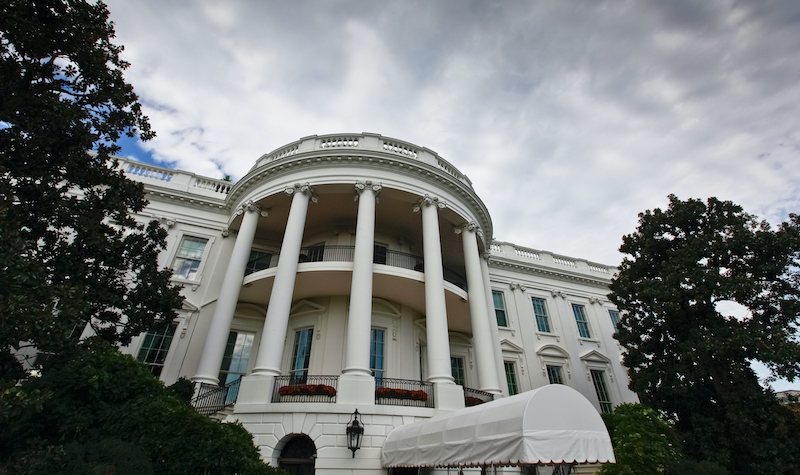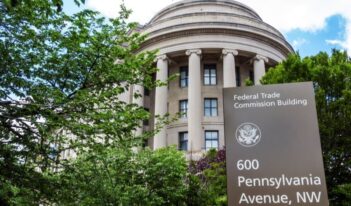
The Trump Administration’s claims about its deregulatory accomplishments do not withstand scrutiny.
President Donald J. Trump and his supporters like to point to the positive economic trends the United States experienced prior to the COVID pandemic. They argue that these positive conditions stemmed from the President’s policies, especially his emphasis on deregulation. But what has the Trump Administration really accomplished when it comes to regulation?
The answer is much less than the Administration has claimed—and much less than probably most members of the public would surmise. In a report released today, we attempt to match up the claims the Administration has made about its deregulatory accomplishments with what the evidence actually shows. Drawing in part on new data we compiled from over the last four years, we find that virtually every major claim the Trump Administration has made about deregulation is either wrong or exaggerated. The reality is that the Trump Administration has done less deregulating than regulating, and its deregulatory actions have not achieved any demonstrable boost to the economy.
Consider first the President’s claim to “have removed nearly 25,000 pages of job-destroying regulations—more than any other President by far in the history of our country.”
This is an easy claim to check because the Office of the Federal Register maintains data on the number of pages in the federal regulatory code book. By the end of 2016, that code contained 185,053 pages. Rather than that number dropping to about 160,000 pages as President Trump has claimed, the latest statistics show the code now contains 185,984 pages—a slight increase from 2016. Moreover, while it is true that the number of code pages dipped slightly in 2018 before rebounding in 2019, even that slight dip was smaller than those of numerous prior administrations. For example, the Clinton Administration oversaw a reduction in pages nearly 10 times that of the temporary dip under the Trump Administration.
Or consider further the President’s claim to have eliminated existing regulations: “For every one new regulation added, nearly eight federal regulations have been terminated.”
This number has varied in different statements made over the course of the Administration. Even today, President Trump’s campaign website asserts that “the Administration actually eliminated 22 regulations for every new regulatory action.” But, as two of us have shown before, the lists of regulatory and deregulatory actions that the Administration has put forward to support these claims have been problematic. They have included withdrawals of proposed rules that were never finished, repeals of non-regulatory guidance documents, and even proposed deregulatory actions rather than completed ones. In addition, when comparing deregulatory actions to regulatory ones, White House officials only count new regulations designated as “significant,” while they count deregulatory actions of any magnitude or level of significance—what one of us has called the War and Peace versus Peter Rabbit problem.
We collected our own data from the underlying records that federal agencies maintain of their regulatory agendas. Since 2017, these agendas have included a designation for whether an agenda item was deregulatory or not. We looked at all the completed actions in this database, putting aside actions completed by withdrawing (but not finalizing) proposed rules as well as those actions taken by independent agencies (which are not even included in the Administration’s own lists).
Our results reveal a portrait of activity completely at odds with the Administration’s deregulatory mantra. We find three new completed actions in these regulatory agendas for every one that is labeled deregulatory. When we look at just economically significant actions, even on assumptions favorable to the Administration, we find only one deregulatory action for every one action labeled as regulatory.
When it comes to what difference this activity has made for the economy, we find again that the Administration’s claims have been unfounded or exaggerated. Vice President Mike Pence has said that “we’ve saved $220 billion in our economy,” while President Trump has asserted that “our historic regulatory relief is providing the average American household an extra $3,100 every single year.” These claims appear to be based on a report issued by the Trump White House’s Council of Economic Advisors (CEA). Even if that report is taken at face value, it does not support the President’s or Vice President’s statements. The economic gains presented in the CEA report were never meant to show any boost that the economy already received or is currently receiving. Rather, the CEA’s numbers purport to estimate what the economy might gain in the future—as much as possibly 10 years down the road.
We emphasize “purport” because the estimates reported by the CEA are not credible. These estimates are based on assumptions that lack support in the CEA’s report; at times, they are not even clearly spelled out. Moreover, the CEA’s estimates grossly inflate the effects of deregulation when compared with the government’s own estimates of the costs anticipated from the rules being deregulated. One U.S. Department of Interior rule, for example, was expected to impose $81 million in annual costs to the economy, but the CEA claimed that its repeal under the Trump Administration would eventually unleash $2 billion a year in real income for the economy.
In these and other ways, the Trump Administration’s deregulatory track record has been grossly overstated. The evidence for having done much by way of deregulating is remarkably weak. In fact, the positive economic trends that the Administration likes to take credit for—such as increases in the gross domestic product (GDP) and decreases in unemployment—had their roots in policies implemented during the Obama Administration. If anything, the pace of overall growth in GDP has actually slowed somewhat during the pre-COVID years of the Trump Administration relative to the last three years of the Obama Administration.
The Trump Administration has not only exaggerated the positive effects of deregulation; it too often has ignored or downplayed the negative consequences. The adverse effects could be substantial for the consumers, workers, and patients who depend on regulations for important protections—and for a planet facing the ravages of climate change. It is far too early to assess the overall impact of this Administration’s deregulatory push. But our research suggests at least the following is true: The Trump Administration has been more effective at deceiving the public about its achievements than in actually using deregulation to boost the economy.





